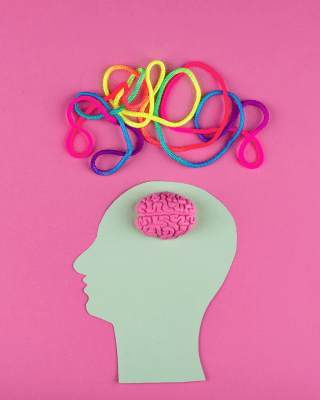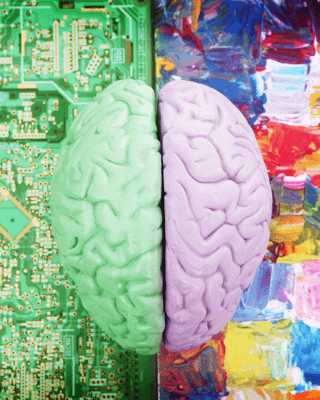Understanding Autism, ADHD and the Overlap Between Them
By Dr Maria Daves, Clinical Psychologist
Can You Be Autistic & Have ADHD?
If you’ve ever felt like your brain works differently – and that those differences aren’t easily explained by one label alone – you’re not alone. Many people live with traits of both autism and ADHD, often without realising it.
It can feel confusing when you relate to traits of both autism and ADHD. You might have always sensed that your brain works differently, but never quite had the words to describe it. For many, getting clarity later in life brings a great sense of relief.
The Three Levels of Autism
The DSM-5 (Diagnostic and Statistical Manual of Mental Disorders) defines three levels of autism:
- Level 1: Requiring support
- Level 2: Requiring substantial support
- Level 3: Requiring very substantial support
People at Level 3 often experience significant challenges in their daily lives, including difficulties with communication, social interaction, and executive functioning. It’s important to remember that every autistic person is unique, with their own combination of strengths and challenges.
Models of Understanding Autism
There are different ways to understand autism:
- Medical model: Views autism as a condition to be treated or cured
- Social model: Emphasises that barriers in society contribute to disability
- Neurodiversity approach: Recognises autism as a natural variation in human neurology, not a disorder
Steve Silberman’s book NeuroTribes explores this neurodiversity perspective in detail and is highly recommended.
What is ADHD?
ADHD stands for Attention Deficit Hyperactivity Disorder. It affects behaviour, with symptoms such as restlessness, trouble concentrating, and impulsiveness. ADHD is often diagnosed in childhood, especially when a child starts school, but it can also go unrecognised until adulthood – particularly in those with an inattentive presentation.
This isn’t just something people ‘grow out of.’ Many adults with ADHD continue to face challenges – like difficulties with sleep, anxiety, or low mood – that can feel overwhelming or misunderstood by others.
The Overlap Between Autism & ADHD
Between 30% and 80% of autistic people are also diagnosed with ADHD.
Both conditions are neurodevelopmental, meaning they affect brain development and the central nervous system, which is responsible for movement, memory, language, social interaction, and focus.
Common experiences shared by those with autism and ADHD include:
- Sensory sensitivities
- Intense focus on specific interests
- Executive dysfunction
- Emotional regulation issues
- Sleep disturbances
- Rejection sensitivity
Someone with ADHD may seek novelty and act impulsively, whereas someone with autism may prefer routine and structure. When both conditions co-occur, sometimes referred to as being “AuDHD“, individuals can experience internal conflict between these differing needs. For example, the ADHD traits may crave spontaneity, while the autistic traits seek routine.
Executive Function & Its Challenges
Executive function is like the brain’s management system. It helps us plan, organise, start tasks, set goals, and manage daily life. In individuals with autism and/or ADHD, this system often doesn’t work in typical ways.
Challenges may include:
- Difficulty shifting between tasks
- Trouble initiating tasks, especially unfamiliar ones
- Struggling to hold multiple pieces of information in mind
- Needing more time to process information
- Intense emotional responses
Increased stress can exacerbate these executive function issues, making day-to-day life even more difficult.
How Are Autism & ADHD Diagnosed?
Diagnosing autism and ADHD can be complex, especially when symptoms overlap. Ideally, assessments should use gold-standard tools:
For ADHD:
- DIVA (Diagnostic Interview for ADHD in Adults)
- QBCheck
- Conners Assessment
- Input from teachers, family members, and personal accounts
For Autism:
- ADI-R (Autism Diagnostic Interview – Revised)
- AAA (Autism Spectrum Screening Questionnaire)
- DISCO (Diagnostic Interview for Social and Communication Disorders), developed by the Lorna Wing Centre
It’s important that assessments consider sensory sensitivities, executive function challenges, and how these change under stress.
How Does Having Both ADHD & Autism Affect Daily Life?
Living with both autism and ADHD can feel like being pulled in opposite directions, craving structure but struggling to create it, or seeking stimulation but finding it overwhelming. On the outside, you might seem like you’re managing just fine. But inside, everyday things—like paying bills, keeping plans, or just getting started—can feel unexpectedly hard.
There may also be internal tension. For example, the autistic need for routine might clash with the ADHD difficulty in maintaining it, leading to frustration and inconsistency.
What To Do If You Suspect Autism & ADHD
If you suspect you might have one or both conditions:
- Start with screening tools. Consider the Autism Quotient or CAT-Q for autism, and the Russell Barkley scales for ADHD.
- Consult a qualified professional. Make sure they are trained in the appropriate diagnostic tools and are registered with a reputable professional body.
Final Thoughts
Understanding yourself is powerful. A clear diagnosis doesn’t put you in a box, it gives you language, options, and validation. With the right support, you can navigate life in a way that feels more aligned, less exhausting, and uniquely yours.
About Dr Maria Daves
Dr Maria Daves is an experienced clinical psychologist who specialises in working with neurodivergent clients. She conducts combined Autism and ADHD assessments and provides compassionate, tailored support to teens, adults, and families. Maria brings over 20 years of experience across education, social care, and mental health services. You can learn more or enquire about sessions with her via Harley Therapy.








